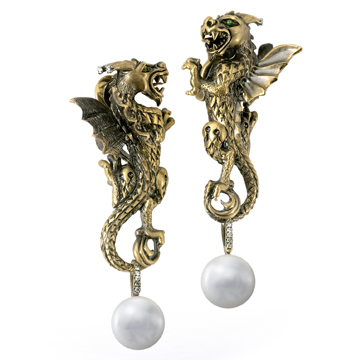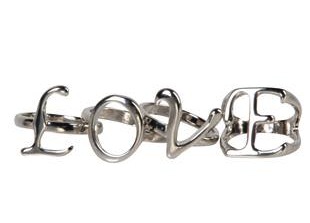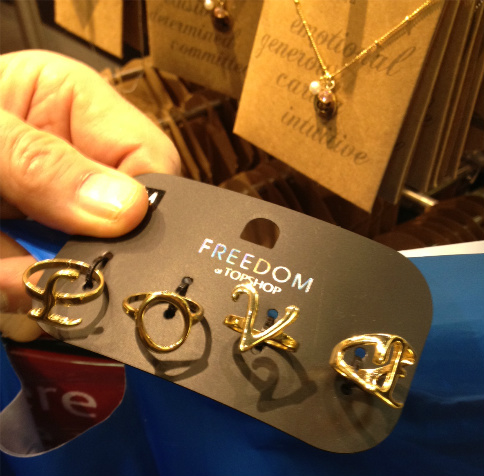I’ve written plenty about the classic small-business issue of economy of scale: the high cost of producing low quantity (and the even higher cost of producing low quality without a way to distribute the goods). My Huffington Post story, “The Agony and Ecstasy of Small Business,” offers the most concise explanation, but you can get additional fine-jewelry-specific insight from the “Get Smart” posts on this blog:
- Get Smart (About Manufacturing)
- Get Smart (About Quality)
- Get Smart (About Custom Work)
- Get Smart (About Quantity)
- Get Smart (About the Price of Gold)
- Get Smart (About the Price of Gold), Part II
The topic has been on my mind again since I read Adam Davidson’s New York Times Magazine story called “What’s a $4,000 Suit Worth?” this month. I encourage you to read the whole story, but I’ll point out some highlights. Davidson wrote about Peter Frew, who, when he arrived in New York City a few years ago, “was one of maybe a few dozen people in the U.S. who could construct a true bespoke suit.” Davidson continued:
“Frew, who apprenticed with a Savile Row tailor, can — all by himself, and almost all by hand — create a pattern, cut fabric and expertly construct a suit that, for about $4,000, perfectly molds to its owner’s body. In a city filled with very rich people, he quickly had all the orders he could handle.”
But, rather than the “rich designer in an atelier on Madison Avenue” that Davidson expected, Frew was working out of a ground-floor apartment in Brooklyn and making $50,000 a year. I identified with Davidson’s description of Frew’s cost and labor situation.
“Like a 17th-century craftsman, he has no economy of scale. It takes Frew about 75 hours to make a suit — he averages about two per month — and he has no employees. A large part of his revenue is used to pay off his material expenses, and because his labor is so demanding, he relies on an outside salesman, who requires commissions.”
Compared to Frew, Savile Row suit-maker Anderson & Sheppard is a big company, making around 25 suits a week for revenue of $5.4 million a year, according to Davidson. (For further comparison, Ralph Lauren reported revenues of $6.9 billion for its last fiscal year.) Even so, Anderson & Sheppard’s CEO, Anda Rowland, told Davidson,”There’s no scalability. Whether we’re making 50 suits or 1 — each unit costs the same.”
Like other observers of the fashion industry, Davidson realized:
“Bespoke suits — like expensive couture gowns — are great for building a reputation, but they are lousy for business. And modern clothiers’ profits have long come from establishing a strong brand and then emblazoning it on all sorts of cheaper products, like fragrances, which can be mass-produced. Michael Kors and Ralph Lauren — not to mention Carolina Herrera — began as small studios before spinning off into variegated billion-dollar businesses. “
That’s the dream, isn’t it? But getting from “establishing a strong brand” to “emblazoning it on … cheaper products” isn’t a trip from point A to point B, as people without entrepreneurial experience often think. It’s more like wandering for 40 years in the desert. Bitches, I’ve tried everything! I started out in 2005 doing simple designs. My little gold-and-diamond necklaces sold for $500. My friends liked buying those — they still wear them! — but store buyers and magazine editors said the work wasn’t “differentiated enough.” After a year or so of that feedback, I decided I might as well pursue my growing interest in more intricate, history-inspired, wearable art. I’m glad I did, not only for aesthetic reasons but because the price of gold has tripled since my early days. Those $500 pieces would now cost $1,500 — too much for friends coping with all the job uncertainty of the recession. That “aspirational” market is gone. Ultra-high-end is a stronger industry sector, so I’ve embarked on a deliberate effort to offer more “if you have to ask, you can’t afford it” 18K-gold signature pieces.
At the same time, I’ve been expanding my more moderately priced sterling-silver WENDYB by Wendy Brandes diffusion line. Moderately priced for me is $50 to $1,000 — well above what you’d find at Forever 21 or H&M or Walmart. As I’ve pointed out before, a small designer can’t match the rock-bottom prices of fast-fashion chains. I’ve taken my best shot. I tried Asian manufacturing, producing 100 units of several silver designs. That order was less expensive per unit (though much more costly in total) than producing the items one at a time in New York. It was like a baby version of mass production, though. Serious mass production is 100,000 units. Even a limited-edition, John Varvatos version of the Chrysler 300 sedan that I saw during New York Fashion Week is being produced in a run of 2,000. That seems huge to me! Anyway, without a retailer to help with distribution, it took me two years to sell 50 units of the most successful design, one by one, online. The total profits of those sales were less than what I’d get from selling a single $10,000 18K-gold piece. (If anyone wants to buy 50 silver pieces at once, I’ll give you a good discount. You know what that is? Economy of scale!)
Next, I tried small runs of silver and brass designs made in New York. The prices were well below my gold work, but still cost as much as 10 times more than silver and brass would if produced in larger quantities in Asia. I tried pricing brass designs in Asia, only to realize that I would be neck-deep in the minimum of 280 units of each design (the factory was willing to do that instead of its typical 1,000-to-3,000-unit minimum) and I would probably die of old age or boredom before selling all those units singly for $20 apiece.
A collaboration with a fast-fashion retailer would be an ideal way to establish a brand name and plaster that name on inexpensive product. But, as I’ve learned, chains like Topshop have no need to pay independent designers for concepts when it can take them for free. Not only did I not make any money when Topshop copied my swear-ring design this year, but it cost me money: I just got a bill for $3,000 in legal fees. I initially tried to avoid that by handling the situation without a lawyer — on the lawyer’s (free) advice — and, thanks in part to a social-media campaign, Topshop promised via Twitter to stop selling the rings.
All of my legal expenses were incurred a full month after that, when I had to call in the cavalry to negotiate with Topshop’s lawyers after I discovered that Topshop hadn’t kept its tweeted word. I reckon fast-fashion retailers count on the fact that many designers can’t afford to take it that far.
But I’m going to keep wandering through this desert, and for now that involves making special designs for people who can afford to treat themselves and don’t want to wear what everyone else is wearing. If you want something less special and less expensive, I suggest this four-ring “Love” set from Deb Shops.
Notice the similarity to the “Love” rings I saw in Topshop?
Who knows where else this same design will turn up? I’m guessing that a number of retailers buying it from the same source and “emblazoning” their names on it. That’s the fashion business!




Excellent article and excellent series. You said it.
The quality and beauty of your work always shines through, Wendy. Crazy how protecting your own work is costing you so much in legal bills.
Have you thought to go to the UK press about TopShop ripping you off? Usually people are on the side of the underdog. The injustice of it all will be plain to see. It’s the same as pirating music or films, yet there are laws to protect those artists. I admire the French for having stronger laws to help protect designers especially the powerful body to protect their precious Haute Couture.
I am so sorry TopShop don’t care, have neither morals nor conscience to keep to their promise. What do you have to to do, get it signed in blood?
I did think about you when I read the story of the $4000 suit. I respect the way you’re doing your business and look forward to owning one of the “biggies”!
Great article, great post. I’m sorry you have to keep wandering in the desert but I’m grateful for what you do. I feel like a better person wearing your jewelry.
Really well put, as always, W. People need to read articles like these to understand what’s actually going on in the world of manufacturing (and being “imitated”, ripped off – I mean.)
Can’t say I didn’t know this stuff was going on but it’s rather depressing for independent designers. *sigh* Anyway you do a great job explaining it and I’ll def be using these posts as reference if anyone starts giving me crap about the cost of independent designer pieces. Though I may never afford them, I really admire your work and don’t think you should ever compromise their quality/quantity to sell more, though I understand a girl’s gotta eat!
ps: fuck TopShop!
I appreciate your appreciation! 😀
Yesterday my musician-husband learned that one of his contemporaries has just released a single that plagiarizes the title and feel of one of his songs. They say imitation is the sincerest form of flattery, but in these cases it’s just plain robbery. Although I’m in the category of folks that “need to ask”, I try to adorn myself with things that have integrity. I appreciate your artistry and I love seeing gorgeous celebrities (including you!) wearing your designs.
Give your husband my condolences! That’s terrible. People are shameless. That “imitation is flattery” line needs to be beaten to death with a stick.
I can more than relate. But, please keep “wandering the desert” Wendy! You are truly one of the best. F-ing Topshop should pay your attorney fees. I agree with your comment above (which is quite funny BTW and I just might steal it!) — “The ‘imitation is flattery’ line needs to be beaten to death with a stick.” LOL. This is a great article and in a weird way it’s nice to know that other craftsmen/designers/artists share the small business woes.
Why didnt you make a Fuck Top Shop necklace? They couldnt rip that off
Good point!
Hi
It’s so good to read from another high-end designer. And I fully appreciate the work that you’re doing so far. I enjoyed reading about your path so far and the mini-pivots taken in testing out different materials according to your feedback and sales and the task of meeting minimum order requirements. It all completely resonates with me as I’m now just entering my 2nd year of trading!
I started my own women’s and maternity brand last year, please come and have a look!
Thanks x